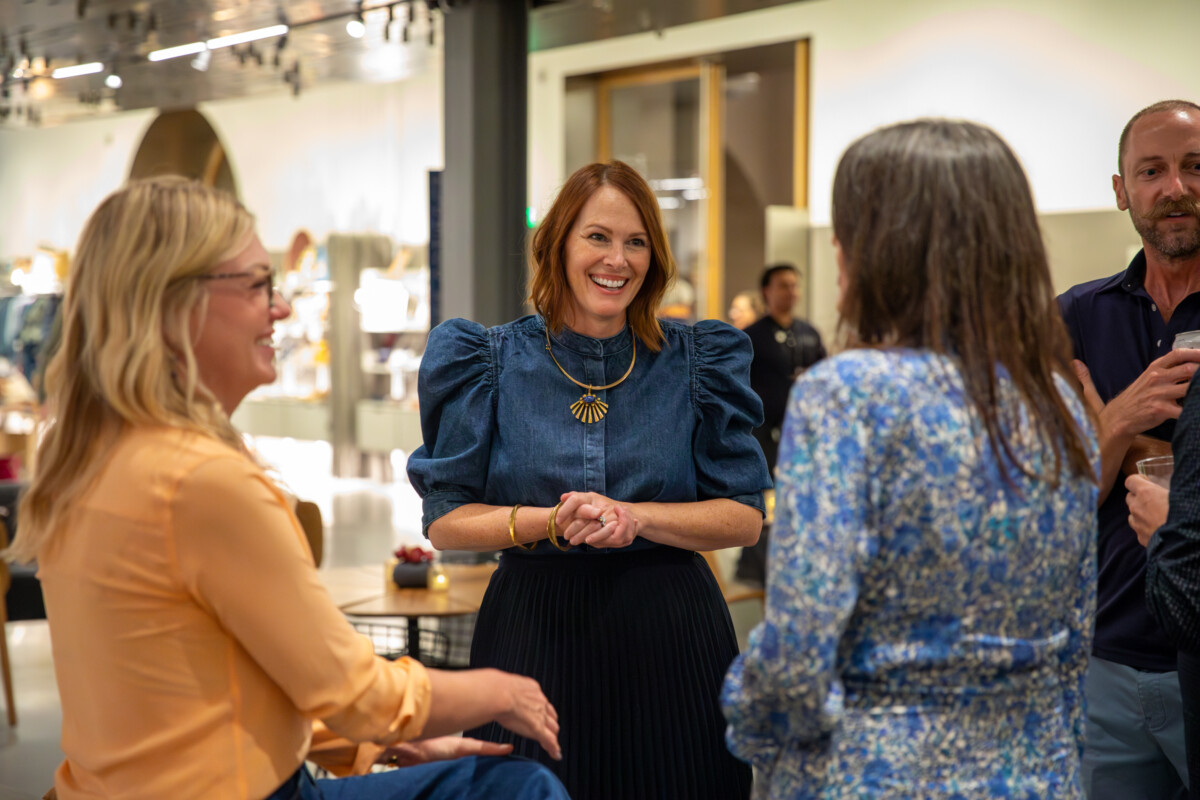Nat Biendara Wilson: As an emerging museum professional myself, I'd love to get kind of a background of your experience at Mingei and hear more about your story in particular. What was your first impression of Mingei?
Jessica Hanson York: Wow, you know, it's such a singular museum, and this is such a strange story, really, about how I came to Mingei, but my husband and I loaned an object to the Museum for a show.
NBW: That's so special!
JHY: I was kind of new to San Diego. My husband's a native San Diegan, so he knew quite a bit about Mingei, but I was new to town and hadn't fully explored all of Balboa Park yet. One day, someone from the Museum showed up at our house to pick up this sculpture we had that we were sending on loan, and then a few weeks later, we came to see the show. It was an exhibition on the work of John Dirks.
John had been a friend of ours, and he, for many years, was the head of the furniture department at SDSU, San Diego State University. He had been a contemporary of Martha Longencker’s, the founder of the Museum. It was a really special show.
I walked in and just was, I think, excited and kind of astounded that such a museum was here in San Diego—this museum of folk art, craft, and design. Then I started coming all the time to visit each new round of exhibitions, and I really fell in love with the Museum.
NBW: Was this sculpture something that you both had for a while and you didn't maybe consider it to be something that's museum-worthy, but now it was all of a sudden?
JHY: It certainly shifted my perspective, right? John was this wonderful person who we would go visit and have ice cream with, and the sculpture was something he had passed on to us, and we loved it. We had, and continue to have, a pretty modest art collection, and I don't think I had ever considered, ‘Oh, something we own might be in a museum someday.’ That was a shift.
When I started coming back to Mingei to enjoy more of the exhibitions, that just further expanded my perception of what we look at as art. I'd always been a museum person and a museum lover, but Mingei is so special and so unique. I was coming in to see single shows, shows of single artists that featured ceramics and folk art, and then there were these incredible collections of things like hat boxes I didn't necessarily expect to encounter, but it was exciting.
NBW: Yeah, absolutely. I think moses paper hats for Fold, Twist, Tie was one of the first exhibitions I experienced at Mingei, and then one of my favorites was Toying with Design. Both of these exhibitions speak to that—of these things that we either use every day, as a paper bag, or a Toying with Design where it's a chair or an ice pack, for example, was one of my favorite features there.
It reminded me that the things that we use every day really are and can be objects of art as well. I think that's a fascinating thing to think about in a society when we value convenience versus also beauty in the items that we're using.






























